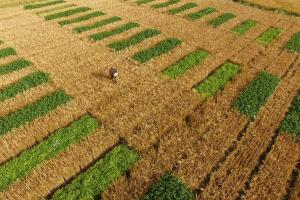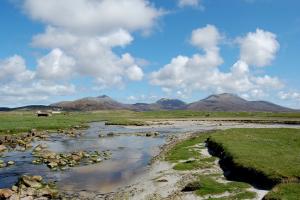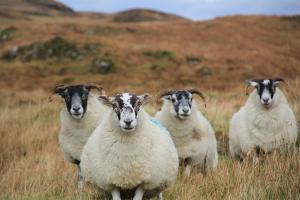Peatland restoration could make a considerable contribution in achieving national emission targets and is a vital part of Scotland’s strategy in moving towards net zero emissions.


Our food consumption is guided by perceive norms and the food choices of others around us. In the UK today, unhealthy and environmentally unsustainable diets are most commonly eaten (the norm).

Protein intake is insufficient among middle-aged and older adults in the UK, and this insufficiency is a major contributor to ill health and disability.

Farming practices are evolving in response to intensification, diversification and climate change. As farm management has changed, pathogens of livestock have also adapted to optimise their reproduction and transmission opportunities.

Soil is, and always will be, a very valuable resource. Soil is critical for food production and regulating several services to the wider environment, such as flood regulation and storing carbon.

The Islands (Scotland) Act 2018 introduced several measures to ensure that there is a sustained focus across the Scottish Government and the public sector to meet the needs of island communities, now and in future.

With support from the SEFARI Gateway Responsive Opportunity Fund, Moredun Research Institute (MRI) and Scotland’s Rural College (SRUC) jointly organized and hosted an

The following case study summarises work delivered as part of a SEFARI Fellowship with Scotland Food and Drink (SFD) undertaken during 2019 to ascertain the current state of play regarding the technologies best suited to authenticity, provenance and traceability strategies.

Despite many initiatives to safeguard biodiversity, recent analyses and reports show that biodiversity continues to decline at the global level.

We are currently facing three major global challenges: climate change, biodiversity loss and the development of sustainable food production systems. Ideal solutions to these challenges would be ones that deliver win-wins, addressing at least two of these simultaneously.

The Scottish Government is currently responding to a multitude of grand and complex environmental challenges, such as biodiversity loss and climate change. But how do we know if these responses, or the money spent on delivering them, are having the desired effect?

In this project we looked at what makes people care about peatland restoration. Peatbogs are important because of their ability to store carbon, regulate water flows and provide a home for rare species of plants and animals. Nevertheless, peatbogs are often described as a hard-to-love ‘Cinderella habitat’.

2019 was an important year for Scotland's islands, with the development of The National Islands Plan, an increased focus on repopulation, and concern abou

Tail biting affects growing pigs in Scotland and around the world and has no simple solution. It begins in a sudden and unpredictable way, then spreads through a group.
The following case study summarises work delivered as part of a recent SEFARI Fellowship with the Cairngorms National Park Authority (CNPA).

Since the emergence of late blight (Phytophthora infestans) in the 1840s this disease has presented a major challenge to the potato industry, with annual losses estimated to be £55 million in the UK.

Sheep scab is a highly contagious disease caused by infestation with the mite Psoroptes ovis. It is endemic in the UK, notifiable in Scotland and has significant economic and welfare impacts.

Leading industry and SEFARI science representatives from Scotland’s food, drink and agricultural sectors came together to discuss and speculate what Scotland’s dinner plate may look like in 2050.
Infrared (IR) Spectroscopy is a versatile analytical technique that can characterise a wide variety of different sample types e.g. from drugs and plastics to soil and minerals.

This scoping study explored the extent of the gender pay gap in rural Scotland, how it has changed over recent years, and potential reasons that might explain its extent and fluctuations over time.